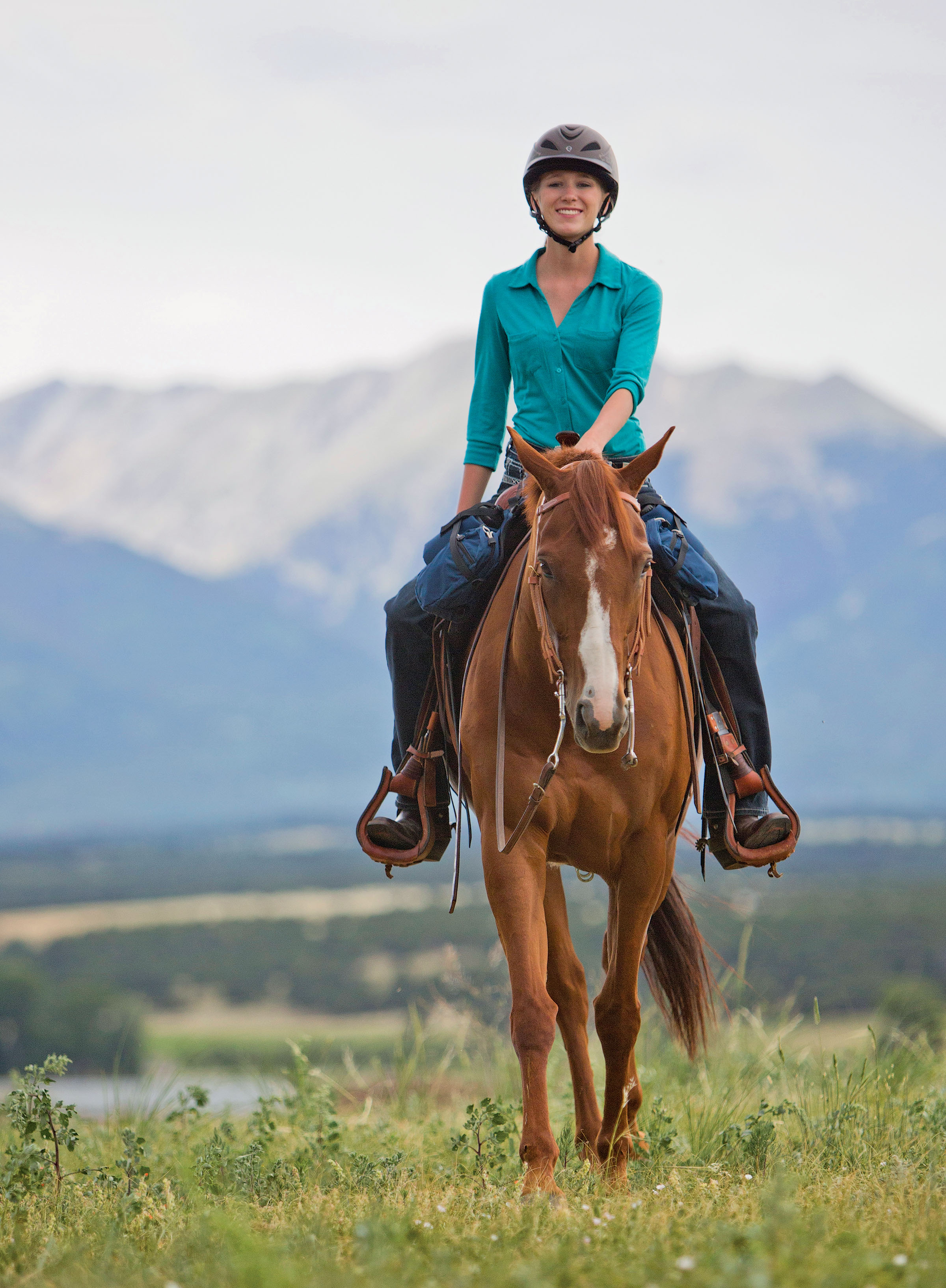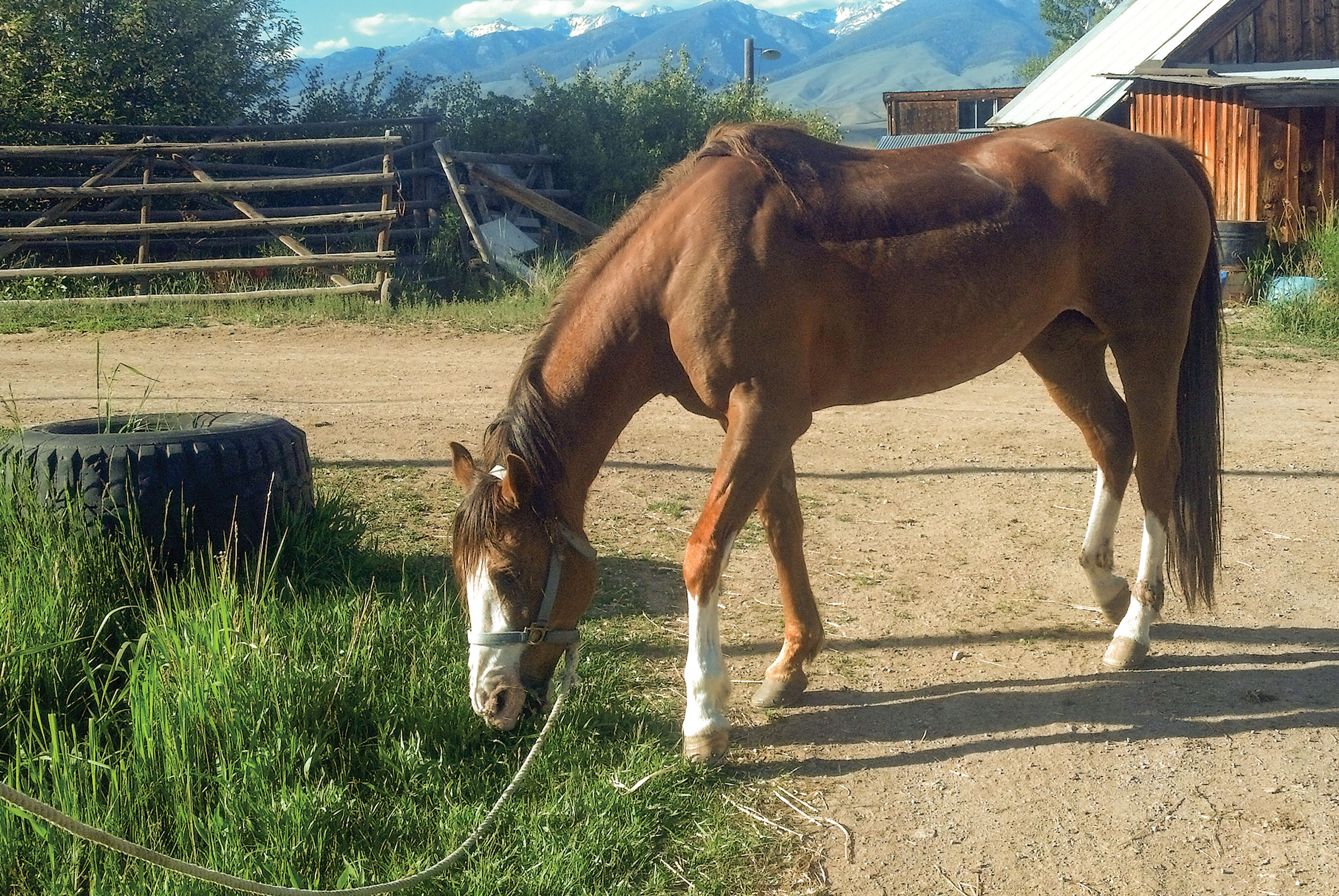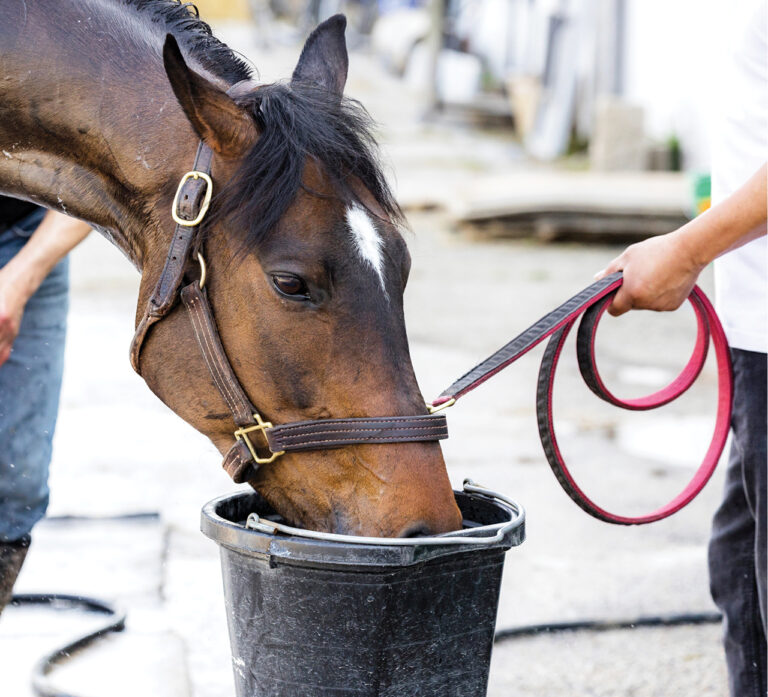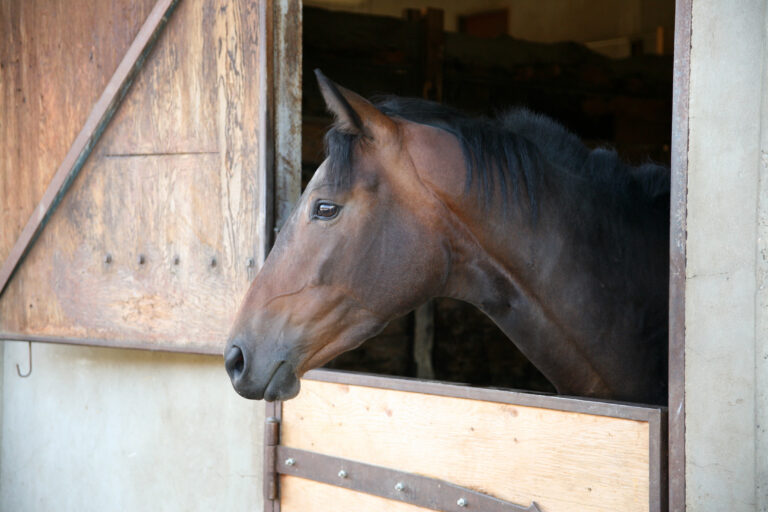
Summer means you’re enjoying long trail rides, and maybe competing in endurance rides or competitive trail rides. Before you go, ensure that your horse won’t become overheated or dehydrated, conditions that can lead to serious health consequences.
[READ: Hot-Weather Horse Keeping]
Here, I’ll explain how to head off four hot-weather hazards: 1) on-trail crisis, 2) overheating, 3) dehydration, and 4) heat-index risks. For each hazard, I’ll tell you how to avoid it and why this works, then give you on-trail techniques and an expert tip.
Next, I’ll outline signs of heat stress/dehydration. Finally, I’ll explain the immediate steps to take if your horse becomes overheated/dehydrated despite your best efforts.
Even if trail riding isn’t your summer activity, you’ll want to read on. Each of these hazards can arise in arena riding and competition, too.
Hazard #1: On-Trail Crisis
How to avoid it: Know your horse.
Here’s why: If you know what’s normal for your horse by taking his vital signs when he’s cool and at rest, you’ll know when there are any changes signifying that something is wrong.
A horse’s vital signs are his temperature, pulse (heart rate), and respiration rates (TPR), plus the appearance of his mucous membranes (gums), his hydration level, his capillary-refill time, and his gut sounds.
The normal body temperature for horses is 98 to 101 degrees Fahrenheit. Normal resting pulse is 30 to 40 beats per minute. Normal respiration is eight to 20 breaths per minute. His mucous membranes should be pink and shiny rather than dry and pale.
Check for dehydration by pinching a fold of skin at the point of your horse’s shoulder. (Skin becomes less elastic due to fluid loss in underlying tissues.) The pinched-up fold should snap back immediately.
Your horse’s capillary-refill time also indicates his hydration level. To perform this check, press your thumb against his gum, pressing blood out of that spot. Then lift your thumb, and count how many seconds it takes for the gum color to return to normal. It shouldn’t take longer than 1 to 2 seconds.
To check your horse’s gut sounds, hold a stethoscope over his abdomen in several places. You should hear the gurgles and growls of a normal equine gut.
[READ: Check Your Horse’s Vital Signs]
On-trail techniques: Be alert to any sign of overheating or heat stress before it becomes a crisis. Tune in to your horse’s subtle signs of fatigue, such as a hesitancy to move out or a slowing of his gaits. Check his vital signs to learn the difference between simple fatigue and overheating or dehydration.
As the weather warms, go on a short trail ride on a hot day. Check your horse’s vital signs immediately afterward, then again 10 to 15 minutes later, so you can gauge how quickly he recovers. His vitals should start dropping to his normal rates within this time frame.
When you go on a longer trail ride in the summer heat, check your horse often to ensure that you’re not overworking him. If any one of his vital signs is elevated, or he has trouble catching his breath, stop in the shade, and allow him to recover.
Again, time how quickly your horse’s vital signs return to normal. If it takes longer than 10 to 15 minutes, he’s suffering from heat stress and/or dehydration. Call your veterinarian immediately, and take steps to cool down your horse.
Expert tip: Sometimes, what you think will be an easy ride turns out to be more strenuous than you’d planned. To allow for this circumstance, pace your horse carefully throughout the ride so you don’t use him up too much in the beginning.

Hazard #2: Overheating
How to avoid it: Know how to keep your horse cool.
Here’s why: Any factors that inhibit your horse’s ability to cool himself may lead to overheating, such as any residual winter coat or a larger body mass (whether due to fat insulation or heavy muscles). Of course, any horse can become overheated while carrying a rider on a hot, sunny day.
Your horse cools himself by moving heat to the surface of his skin via his bloodstream to be cooled by the outside air. When it’s too hot to cool himself this way, he cools himself with evaporative cooling via sweating. As sweat evaporates, the water molecules release the heat and energy into the air, cooling him down. Water and air movement aid the evaporative-cooling process.
On-trail techniques: Allow your horse to drink at every opportunity. Place a sponge in a mesh bag with a string. Tie the sponge to your saddle. Whenever there’s water on the trail, use the sponge to apply water to his head, neck, shoulders, croup, jugular groove, and abdominal veins.
If your horse gets seriously overheated and there’s a stream, pond, or lake nearby, walk him into it as deeply as possible, while remaining on good footing. His lower legs don’t have much muscle, giving them increased exposure for cooling. While he’s standing in water, sponge his jugular and abdominal veins.
After your ride, walk your horse in the shade in a large circle, so the breeze can cool him on all sides. Sponge him with water, or hose him down. Make sure his vital signs are normal before you put him in his stall or pasture. Check his vital signs again 15 minutes after you’ve put him away, and again 15 minutes later.
Expert tip: After a strenuous ride in hot weather, check your horse again a few hours later; he might be at risk for colic or laminitis after exerting in the heat.
Hazard #3: Dehydration
How to avoid it: Keep your horse hydrated.
Here’s why: Excessive sweat leads to dehydration, which can lead to heat stress (also known as heat exhaustion or heat stroke). Your horse is especially at risk of heat stress if he’s out of shape or sweats due to nervous energy.
[READ: Electrolytes for Horses]
On-trail techniques: Let your horse drink at every water source you come to so he can replenish lost fluid. The more he drinks, the more he adds to his fluid reserves, and the more urine he produces. Urine comes from the body core and brings a lot of heat with it.
When you stop for breaks, let your horse graze on green grass. The grass’ moisture and trace minerals can help keep him hydrated and replenish the minerals he’s losing through sweat. Note that a desire to eat means he’s not likely in serious danger.
After your ride, let him drink his fill of water, either at the trailer or back at the barn.
Expert tip: When your horse sweats, he loses water and electrolytes (salt and other minerals vital to his body’s processes). Electrolyte supplements can replace this loss, but they also draw water from his body, so use them wisely. Check with your veterinarian before giving your horse an electrolyte supplement. Generally, it’s best to avoid giving your dehydrated horse electrolytes; instead, provide ample salt at home. Note that it’s easier for him to eat loose salt than block salt. Plain salt is best, especially in hot weather; otherwise, he might consume too much mineralized salt—some trace minerals can be harmful if he ingests too much.

Hazard #4: Heat-Index Risks
How to avoid them: Pay attention to the heat index (the combination of heat and humidity) before you ride.
Here’s why: The heat index is the temperature your horse feels on his skin, rather than the air temperature. In a dry climate, your horse’s evaporative-cooling mechanism is efficient. But if the air is already full of moisture, his sweat can’t evaporate—it remains on his skin, holding heat. His body heats up even more, which triggers more sweating, leading to overheating and dehydration.
On-trail techniques: When it’s hot and humid, your horse can get in trouble even on a short ride, especially if he isn’t conditioned and you don’t take immediate steps to cool him down and rehydrate him.
Being saddled hinders cooling, as the air can’t reach the areas covered by tack. Lack of sufficient water to drink can add to the risk of heat stress.
If you live in a humid climate, determine the heat index before you plan to ride on a hot summer day. (Go to the National Weather Service’s Heat Index Calculator, weather.gov/epz/wxcalc_heatindex.) If it’s in the danger zone, plan to ride another time.
To prevent problems during a heat wave, avoid strenuous rides in the middle of the day. Riding early in the morning is best; mornings usually aren’t as warm and humid as the afternoon and evening hours.
Expert tip: Heat stress is cumulative. If it’s 80 degrees Fahrenheit with 70 percent humidity all day, your horse can get in trouble by the end of the day even if he’s not working hard.
Signs of Trouble
Heat stress occurs when the combination of physical exertion and hot weather creates competing demands on your horse’s cooling system, and his body can’t stay within a safe temperature. Dehydration occurs when he depletes his fluid reserves. Both conditions are life-threatening.
Here are signs your horse is in heat stress and/or dehydrated, both under saddle and by his vital-sign readings. If you detect any one of these signs in your horse, call your veterinarian immediately, and take steps to cool down your horse.
[READ: Cool-Down Strategies for Horses]
Under-Saddle Danger Signs
• Sudden fatigue. Slowing down, stumbling, or stopping, refusing to continue. He may appear dull and listless.
• Lack of appetite. Loses interest in eating, even if there’s green grass available.
• Lack of sweat. Cessations of sweating can signify anhidrosis (the inability to sweat when necessary), a serious condition. His skin will feel hot and dry.
• Erratic behavior. Restlessness, anxiety, and excitability or disorientation, due to effects on the brain from dehydration.
• Sunken eyes. Small and sunken eyes, due to wrinkling and lack of fluid in tissues around the eyes.
• Decreased urine output. Frequent urination is normal; otherwise, something is wrong. Keep track of urination frequency, noting the color and quantity. Extremely dark (coffee-colored) or bloody urine is usually a sign of muscle breakdown, with proteins being excreted in the urine.
• Myositis. Also known as azoturia, exertional rhabdomyolysis, and tying-up syndrome, this is a type of muscle inflammation. Your trail horse’s muscles may cramp due to heat stress, dehydration, electrolyte imbalances, and/or energy depletion.
• Thumps. Also known as synchronous diaphragmatic flutter, this condition sometimes develops due to fatigue and dehydration. Signs include convulsive twitching or jerking of the flanks and abdomen in time with the heartbeat. This happens most frequently in a fatigued horse during or after a long ride. Spasms of the diaphragm muscle are triggered by an electrolyte imbalance—specifically, a decrease in calcium, potassium, and magnesium.

Danger-Zone Vital Signs
• Elevated temperature. If your horse’s temperature is above 102 degrees F, he’s in heat stress. In a very tired horse, anal tone relaxes (and air may go in and out of the opening, making a flopping sound). This looseness may result in a reading that’s lower than your horse’s true temperature.
• Elevated pulse and respiration. Your overheated horse’s pulse and respiration rates will be elevated, but his pulse may be weak. This is an emergency situation; call your veterinarian immediately. Note that when your horse is exerting, his pulse rate is always higher than his respiration rate. In the exhausted horse, the respiration rate may climb higher than the pulse. If respiration stays higher, he may be in serious trouble.
• Abnormal gum color. Membranes in your horse’s mouth may be dark instead of their normal pink.
• Failed pinch test. Use the pinch test to check your horse’s hydration level. If the fold stays visible for 2 or 3 seconds before sinking back into place, he’s lost about 4 gallons of fluid (or about 3 percent of his body weight). If the fold remains for 6 to 10 seconds, he’s severely dehydrated.
• Slow capillary-refill time. Your horse is in distress if it takes more than 1 to 2 seconds for the pink color to return, or if his gums are gray instead of pink.
• Gut sounds. Digestion may shut down; there are no gurgling gut sounds when you listen to your horse’s abdomen.
Emergency Measures
If your hot horse doesn’t cool down within 10 minutes, or his condition worsens, call your veterinarian immediately. Heat stress can endanger your horse’s life. While you wait for your vet, take these emergency measures to cool your overheated horse.
• Remove tack. Tack hinders your horse’s ability to cool himself.
• Move to the shade. Find or create shade to shield your horse from the sun’s rays.
• Offer water/green grass. Offer your horse as much cool water as he’ll drink, and allow him to graze.
• Apply cold water. If there’s any cool water available, apply it to the inside of your horse’s legs and thighs, his jugular groove, and head—any areas where large blood vessels are rapidly bringing overheated blood to the body surface. Major blood vessels will stand out prominently in an effort to dissipate internal heat. Constantly scrape off the water to remove the heat from his skin. Avoid draping wet towels over his head and neck; towels act as insulation, retaining heat instead of dissipating it.
• Keep air moving. Manually fan your horse, or stand him in front of an electric fan.
• Walk him. After 30 minutes of cold-water cooling, walk your horse to promote blood flow to the skin and move the air around him to assist evaporation.
• Check his temperature. Keep checking your horse’s temperature so you can report his progress to your veterinarian.




